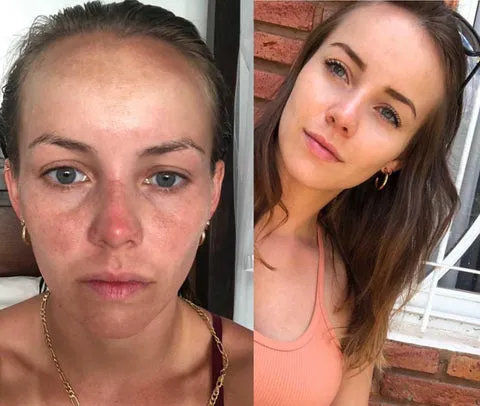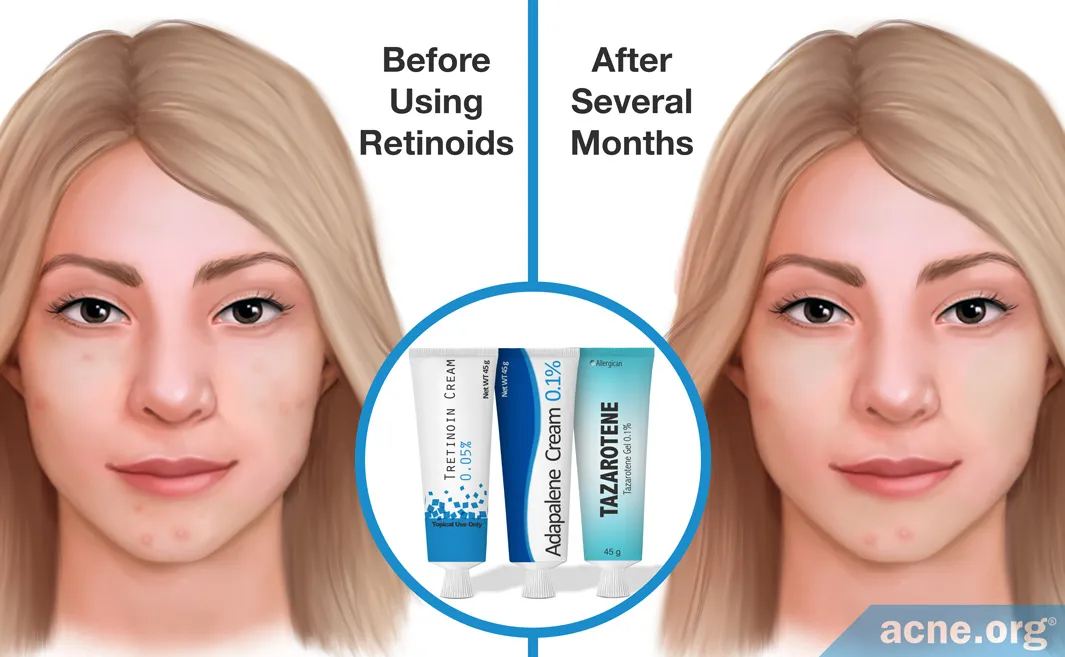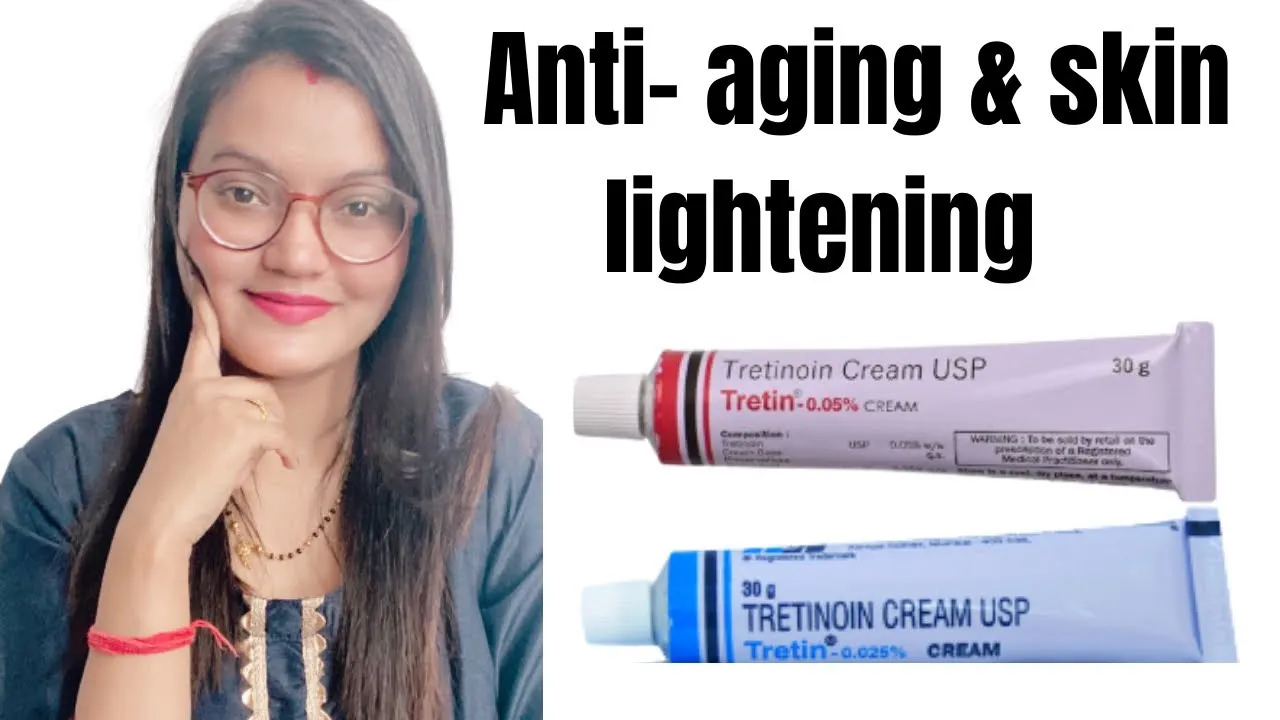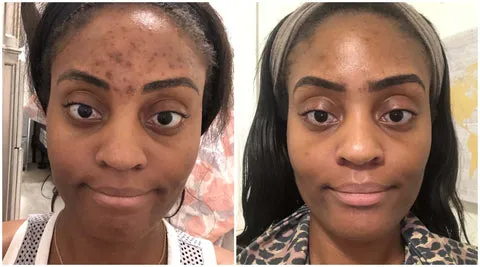Understanding Tretinoin for Skin Whitening
Tretinoin, a derivative of vitamin A, is a powerful topical medication renowned for its effectiveness in treating various skin conditions. While it is commonly associated with acne treatment, tretinoin also holds significant potential for skin whitening. This guide provides a comprehensive look at how tretinoin can be used to achieve brighter, more even-toned skin. It’s crucial to approach tretinoin with a clear understanding of its mechanisms, potential benefits, and proper usage to maximize its effectiveness and minimize any adverse effects. Always consult with a dermatologist before starting tretinoin to ensure it’s suitable for your skin type and concerns.
How Tretinoin Works for Skin Whitening
The Science Behind Tretinoin’s Effects

Tretinoin works on a cellular level to promote skin renewal and reduce hyperpigmentation. It accelerates the turnover of skin cells, causing the shedding of older, pigmented cells and the faster production of new, unpigmented cells. This process helps to fade dark spots and even out skin tone. Additionally, tretinoin inhibits the production of melanin, the pigment responsible for dark spots, further contributing to skin whitening. Regular use of tretinoin leads to improvements in skin texture, reducing the appearance of fine lines and wrinkles, resulting in a more youthful and radiant complexion. This process requires consistency and patience, as results may not be immediately visible.
Conditions Tretinoin Can Help With
Hyperpigmentation
Hyperpigmentation, characterized by dark patches on the skin, can result from various factors, including sun exposure, inflammation, and hormonal changes. Tretinoin effectively targets hyperpigmentation by promoting cell turnover and reducing melanin production. It helps to fade dark spots caused by sun damage, post-inflammatory hyperpigmentation (PIH), and other forms of discoloration, leading to a more uniform skin tone. The effectiveness of tretinoin in treating hyperpigmentation makes it a popular choice for those seeking a brighter complexion. Consistent application as directed by a dermatologist is essential to achieve desired results.
Melasma

Melasma, a common skin condition causing brown or grayish-brown patches, typically appears on the face, often triggered by hormonal changes, sun exposure, and genetics. Tretinoin can be a valuable treatment for melasma, helping to reduce the appearance of these patches. By accelerating cell turnover and inhibiting melanin production, tretinoin helps to lighten the affected areas and even out skin tone. However, melasma treatment often requires a comprehensive approach, including sun protection and sometimes the use of additional lightening agents. Regular follow-up with a dermatologist is crucial for managing melasma and preventing recurrence.
Sun Damage
Chronic sun exposure can lead to sun damage, characterized by dark spots, uneven skin tone, and premature aging. Tretinoin is highly effective in reversing some of the effects of sun damage. It promotes the shedding of damaged skin cells and stimulates the production of new, healthy cells. This process helps to reduce the appearance of sunspots, fine lines, and wrinkles, leading to a more youthful complexion. Using tretinoin in conjunction with consistent sun protection is vital for preventing further sun damage and maintaining the benefits of treatment. Protect your skin everyday to avoid further damages.
Acne Scars
Acne scars, which can include both dark marks (PIH) and textural changes, can be addressed with tretinoin. By promoting cell turnover, tretinoin helps to fade post-inflammatory hyperpigmentation, the dark marks that often remain after acne breakouts. Additionally, tretinoin stimulates collagen production, which can improve the texture of the skin and reduce the appearance of acne scars. While tretinoin may not completely eliminate all types of acne scars, it can significantly improve their appearance over time. Other treatments, such as chemical peels or laser therapy, may be recommended in combination with tretinoin for optimal results.
Preparing Your Skin for Tretinoin

Consulting a Dermatologist
Before starting tretinoin for skin whitening, consulting a dermatologist is essential. A dermatologist can assess your skin type, evaluate your specific skin concerns, and determine if tretinoin is the right treatment for you. They can also recommend the appropriate concentration of tretinoin and provide guidance on how to use it safely and effectively. A professional consultation ensures that you receive personalized advice and minimizes the risk of adverse effects. During the consultation, be prepared to discuss your skincare routine, any existing skin conditions, and any medications you are taking.
Patch Testing
Prior to applying tretinoin to your entire face, performing a patch test is highly recommended. Apply a small amount of tretinoin to a discreet area of skin, such as behind your ear or on your jawline, and observe the area for a few days. This test helps to identify any potential allergic reactions or excessive irritation before you apply the medication to a larger area. If you experience severe redness, itching, swelling, or burning, discontinue use immediately. If the patch test is well-tolerated, you can proceed with applying tretinoin to your face. This precautionary step helps to minimize the risk of unwanted reactions.
Starting with a Low Concentration

When starting tretinoin, it’s crucial to begin with a low concentration, such as 0.025% or 0.01%. This allows your skin to gradually acclimate to the medication, reducing the likelihood of irritation. As your skin becomes tolerant, your dermatologist may advise you to increase the concentration. Using a low concentration initially helps to minimize side effects like dryness, redness, and peeling. Be patient and consistent with your application, and gradually increase the concentration as tolerated. This gradual approach is key to achieving the best results while minimizing discomfort.
Applying Tretinoin for Skin Whitening
The Correct Application Technique
Applying tretinoin correctly is essential for maximizing its effectiveness and minimizing side effects. Start by washing your face with a gentle cleanser and patting it dry. Wait for 20-30 minutes to ensure your skin is completely dry before applying the medication. Apply a pea-sized amount of tretinoin to your entire face, avoiding the delicate areas around your eyes, mouth, and nostrils. Gently spread the medication in a thin, even layer. If you find the medication is causing irritation, you can use the “sandwich method” - apply moisturizer before and after tretinoin to buffer its effects. Remember to wash your hands thoroughly after application.
Recommended Dosage and Frequency

Generally, tretinoin is applied once daily, typically in the evening. The frequency may vary depending on your skin type and tolerance. Follow your dermatologist’s specific instructions regarding the dosage and frequency of application. Starting with every other night may be recommended, especially if you have sensitive skin. As your skin adjusts, you can gradually increase the frequency to nightly application. Consistency is key to achieving optimal results. Avoid over-application, as this can lead to excessive irritation and does not necessarily increase the effectiveness of the treatment.
Important tips to Consider While Applying
There are few tips that you need to consider while applying tretinoin. Avoid applying tretinoin to wet skin, as this can increase absorption and irritation. Be patient and persistent, as it can take several weeks or months to see noticeable results. Use a gentle cleanser and moisturizer to minimize potential side effects. Avoid using other potentially irritating skincare products, such as harsh exfoliants or astringents, while using tretinoin. Make sure to apply tretinoin consistently according to the instructions provided by your dermatologist. Always be mindful of sun exposure and protect your skin from UV rays.
Post-Application Skincare
Moisturizing Your Skin

Moisturizing is a crucial step in your post-tretinoin skincare routine. Tretinoin can cause dryness and irritation, and a good moisturizer helps to hydrate and soothe your skin. Choose a non-comedogenic, fragrance-free moisturizer that is suitable for your skin type. Apply the moisturizer after applying tretinoin, or as needed throughout the day. Regular moisturizing helps to maintain your skin’s moisture barrier, reducing flaking and discomfort. Look for moisturizers containing ingredients like hyaluronic acid, ceramides, and glycerin to provide optimal hydration. Apply before and after tretinoin application to avoid dryness.
Protecting from Sun Exposure
Sun protection is paramount when using tretinoin, as it increases your skin’s sensitivity to sunlight. Apply a broad-spectrum sunscreen with an SPF of 30 or higher every morning, even on cloudy days. Reapply sunscreen every two hours, especially if you are spending time outdoors. Sunscreen is essential for protecting your skin from further damage and preventing hyperpigmentation from worsening. Wear protective clothing, such as hats and long sleeves, and seek shade during peak sun hours. Consistent sun protection is vital for maintaining the benefits of tretinoin and preventing premature aging.
Managing Potential Side Effects
Dryness and Irritation

Dryness and irritation are common side effects of tretinoin. To manage these effects, use a gentle cleanser and a rich moisturizer. Avoid harsh exfoliants or skincare products that can further irritate your skin. Applying tretinoin less frequently, such as every other night, can also help. If the irritation persists, consult your dermatologist. They may recommend adjusting the concentration or frequency of application. Be patient, as your skin will likely adapt to the medication over time. Using the sandwich method by applying moisturizer before and after the application of tretinoin helps to reduce dryness and irritation.
Redness and Peeling
Redness and peeling are also common side effects of tretinoin. These are often temporary and may subside as your skin adjusts to the medication. Applying a hydrating moisturizer can help to soothe your skin and reduce peeling. Avoid picking or scratching your skin, as this can worsen irritation and potentially lead to scarring. If the redness and peeling are severe, consult your dermatologist. They may recommend adjusting the concentration or frequency of application or suggest other strategies to manage the side effects. Be gentle with your skin and avoid using harsh products during this adjustment period.
Sun Sensitivity
Tretinoin increases your skin’s sensitivity to the sun, making it more susceptible to sunburn and sun damage. Consistent and diligent sun protection is essential. Apply sunscreen with an SPF of 30 or higher every morning, and reapply it every two hours, especially when outdoors. Wear protective clothing, such as hats and long sleeves, and seek shade during peak sun hours. Avoiding prolonged sun exposure is crucial while using tretinoin to minimize the risk of sun damage. Failure to protect your skin can lead to increased hyperpigmentation and hinder the effectiveness of your treatment.
Monitoring and Adjusting Your Routine
Evaluating Progress and Adjustments
It’s essential to monitor your progress while using tretinoin and to make adjustments as needed. Assess your skin’s response to the medication, looking for improvements in skin tone, texture, and the reduction of dark spots. Keep track of any side effects you experience, such as dryness, irritation, or redness. Based on your observations, consult with your dermatologist. They may recommend adjusting the concentration of tretinoin, the frequency of application, or your skincare routine. Be patient and persistent, as it can take several weeks or months to see noticeable results. Regularly review your routine and make changes as advised by your dermatologist.
When to Seek Professional Advice
While many side effects of tretinoin are manageable, it’s important to know when to seek professional advice. If you experience severe irritation, blistering, or signs of an allergic reaction, such as swelling or difficulty breathing, discontinue use immediately and consult your dermatologist or seek medical attention. If your skin does not improve after several months of consistent use, or if you have concerns about your treatment, schedule a follow-up appointment with your dermatologist. They can evaluate your progress and make adjustments to your treatment plan. Promptly addressing any concerns or adverse effects ensures the best possible outcome.
In conclusion, tretinoin can be a powerful tool for achieving skin whitening and addressing various skin concerns. Understanding how tretinoin works, preparing your skin correctly, and managing potential side effects are crucial for successful treatment. Consistent application, sun protection, and regular consultations with a dermatologist will help you achieve brighter, more even-toned skin. Be patient and persistent, and enjoy the journey to healthier, more radiant skin.
